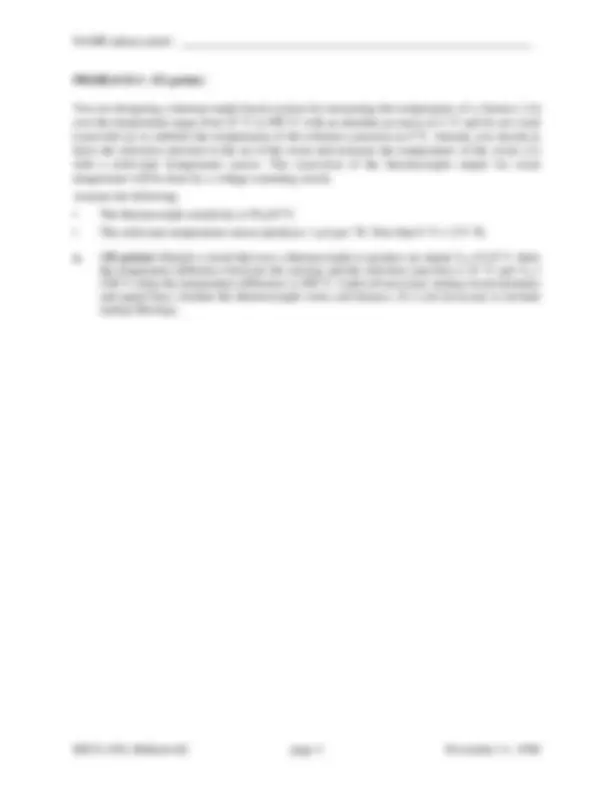




Study with the several resources on Docsity

Earn points by helping other students or get them with a premium plan


Prepare for your exams
Study with the several resources on Docsity

Earn points to download
Earn points by helping other students or get them with a premium plan
Community
Ask the community for help and clear up your study doubts
Discover the best universities in your country according to Docsity users
Free resources
Download our free guides on studying techniques, anxiety management strategies, and thesis advice from Docsity tutors
Main points of this exam paper are: Proportional, Circuit, Output Voltage, Circular Resistor, Convert, Shaft Angle, Output Voltage
Typology: Exams
1 / 4

This page cannot be seen from the preview
Don't miss anything!



Electrical Engineering and Computer Sciences EECS 145L Electronic Transducer Lab MIDTERM #2 (100 points maximum) (closed book, equation sheet provided, calculators OK) (You will not receive full credit if you do not show your work) For the following problems, you may use any circuit components from the 145L lab.
PROBLEM 1 (16 points)
Sketch a circuit that uses a one-turn 1 kΩ circular resistor to convert a shaft angle (0° to 300°) into an output voltage (0.00 V to 3.00 V) that is proportional to the angle. The circuit must be able to drive a 1 kΩ load.
PROBLEM 2 (16 points)
Sketch a circuit that uses a PIN photodiode to convert light intensity (0 to 6.24 x 10^9 photons per s) into an output voltage (0.0 V to 1.0 V) that is proportional to the intensity. ( Hint: 6.24 x 10^9 electrons per s = 1 nA) Assume that the photodiode converts photons into electron-hole pairs with 100% efficiency.
PROBLEM 3 (16 points)
Sketch a circuit that uses a resistive strain gauge to convert strain (–10–3^ < ∆L/L <10–3)^ into an output voltage (–1.00 V to +1.00 V) that is proportional to the strain. The strain gauge has an unstrained resistance of 100 Ω and a gauge factor Gs of 2.00.
b. (18 points) Sketch a circuit that converts the solid-state temperature sensor current into a voltage V b that has the same sensitivity (V/°C) as the thermocouple circuit a. Draw a block diagram and label all necessary analog circuit elements and signal lines. Show where the solid-state temperature sensor is placed in the diagram of part a. above. (It is not necessary to include analog filtering)
c. (16 points) Sketch a circuit that combines the outputs of circuits a. and b. to provide a voltage V c that is proportional to the furnace temperature (0.25 V at 25°C and 5.00 V at 500 °C) and does not depend on the room temperature.